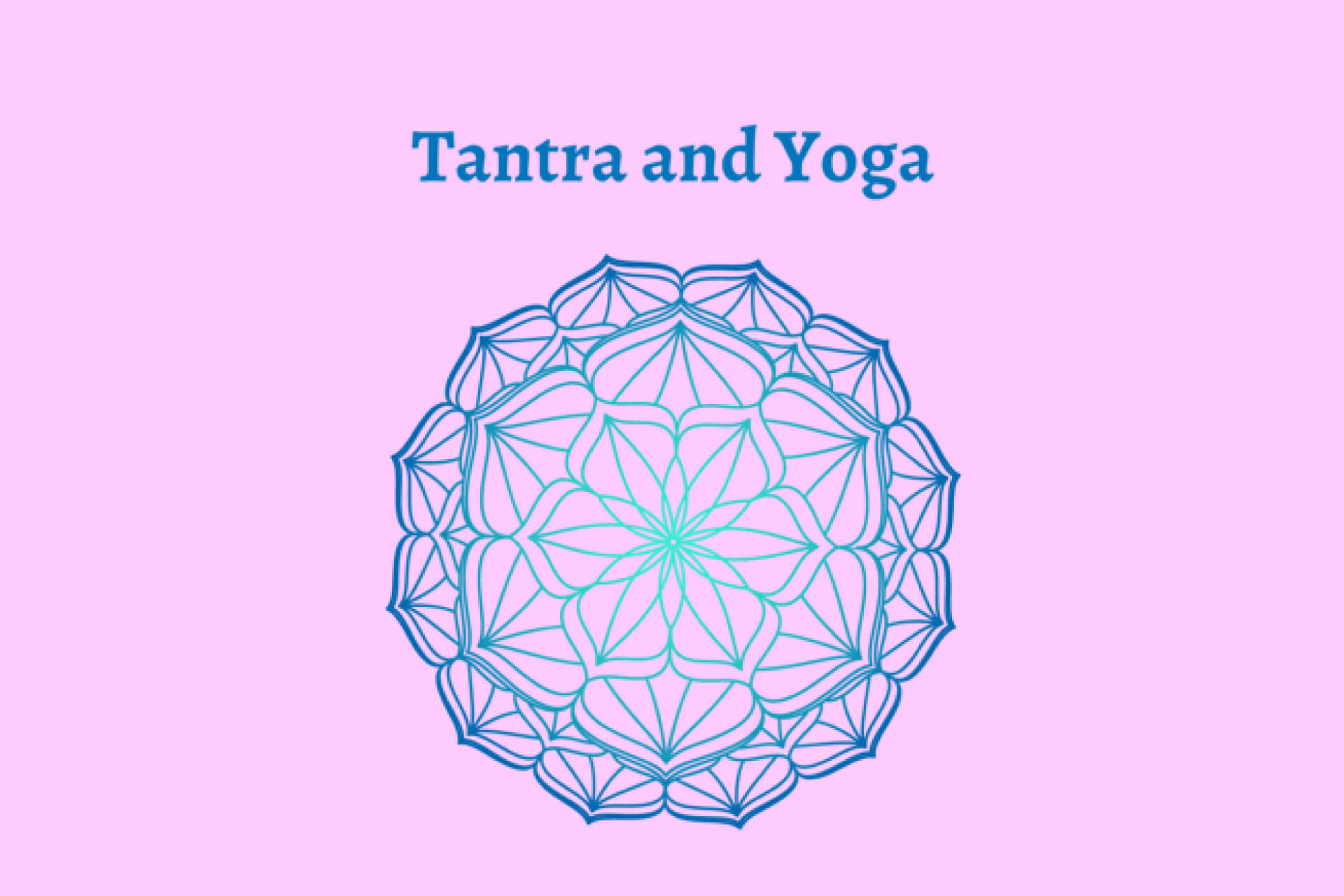Sanskrit word Tantra can be roughly translated as technique or system or doctrine. Tantra tradition is full of diversity and richness of spiritual wisdom. The main aim of the wisdom of Tantra is to achieve enlightenment. Tantrik/male adept or Tantrika/female adept can be from any part of society. I think Tantra makes enlightenment more accessible to everyone, regardless of his or her cast or gender. There are many Tantras, many schools of thought, some very extreme known as left-hand or Vamachara , others are known as right-hand or Dakshinachara Tantras. Dakshinachara Tantras are more accepted by the people of India. There are many traditions in Hindu Tantra itself, here are few names, Mahanirvan Tantra, Gandharva Tantra, Vina-Shikha Tantra, Akulavira Tantra, Guptashadhana Tantra, Kaula Tantra, Yogini Hrudiya, etc. also there are Buddhist Tantras, mainly Tibetan Tantras. Some of the Tantras are not translated into English and also some of them are lost in time.
Tantra is misunderstood and misinterpreted, in India Tantra is considered as black magic or voodoo and, in the west, it is considered as a sexual practice. This is mainly in Vamachara or left-hand Tantras. There seems to be a tendency of secrecy around passing information of Tantra. It is also said that the information is cryptic and this could be also a cause of loss of information or lots of ambiguous and confusing hear-say information about Tantra.
If we look closely, the influence of Tantra is everywhere in present-day Hinduism. Hindu people are following Tantric practices without even realizing that these are tantric practices. Murti puja or idol or statue worship is a Tantric tradition. Alters for gods and goddesses in the homes of Hindus and daily puja of god and goddess is tantric tradition. Rangoli or alpana or mandala in front of the door of a home or a temple is also Tanrik tradition. This shows that even though the origin of Sanatan Dharma or Hinduism is considered to be in Vedas, we cannot deny the influence of Tantra on Hinduism. I think that is the beauty of Hinduism that it accepts many streams of thoughts and I think this is why Hinduism is not only surviving for many thousands of years, but it is also thriving.
The origin of yoga is in the Vedas. There is mention of word yoga in Upanishads, Mahabharata, mainly in Bhagawat gita, Patanjali’s Yogasutras etc. Yoga is one of the six systems of Astika or the orthodox philosophy of Hinduism. The other five are Samkhya, Mimansa, Nyaya, Vaisheshika, and Vedanta. These six Astika or orthodox philosophical traditions accepts Vedas as the authority.
And yet we see the big influence of Tantra on Yoga or vice versa. I think it will not be too bold to say that yoga practices the tremendous influence of Tantra, and at the same time Tantra is yoga or a method of becoming one with the divine, it is so interlinked that we cannot separate yoga from Tantra.
The concept of play of Shiva and Shakti, or Sun and moon or male and female energies within us and balancing of these energies will bring enlightenment is tantric influence. It is said that Hatha Yoga, ha stands for
Sun and tha for moon and yoga practices to bring balance and oneness in Ha tha or sun and moon or male and female energies within us will bring enlightenment.
Amongst other things, Vedas talk about nature, devas, fire and soma, and fire rituals. Awakening of Kundalini shakti or the dormant energy in the form of three and a half coil or coiled serpent shape at the base of the spine is mainly is considered as Tantric concept because the word Kundalini Shakti is not mentioned in the Vedas. Nadies or energy channels and chakras are also mainly from Tantra. I am mentioning mainly ‘Kundalini’ word here because in Atharva Veda there are mentions of currents of life force in the body and eight wheels where deities are present or reside in the body. In Tantra currents of life, force are called Nadies. Purifying nadies or energy channels and chakras or energy centers is also from tantric practices. There is no mention of asana practices, pranayama, mudra, bandha, mantra, or yantra mentioned to balance chakras in Vedas. These are Tantrik practices.
We can also see the link between Vedas, Tantra, and yoga in the form of Shiva. There is mention of Rudra, a fierce god from Vedas is considered as Shiva and some Tantras Shiva is adi Guru of Yoga. In Tantras Shiva-shakti are the creators or essential for creation. Vishnu is also the link between Vedas and Tantra, mainly Vishnu in the form of Krishna.
Just like the Vedas it is difficult to know the exact year of origin of Tantra. Left hand Tantra or Vamachara Tantra is most feared or looked down upon because of practices like magic, smearing ashes, eating flesh, living in a cemetery, and sexual practices. But we cannot forget Chandogya Upanishad has magical analogy and references to sexual intercourse as well. Brihad Aranyaka Upanishad, one of the ancient Upanishad also talks about sexual intercourse. I am mentioning this here because there is a theory of the possibility of Tantra and Veda are from the same period or coexisted. We also see most of the Tantras accept the authority of Vedas for e.g. The Kubjika Tantra mentions the importance of daily practice and accepting the Veda as the authority. Another theory is Tantra is a new evolution in Hinduism. This theory makes more sense as murti puja or idol worship, guru-shishya or teacher-disciple traditions are not motioned in the Vedas. Yet Tantras are respectful of Vedas. They accept Veda’s authority. Tantras and Vedas have a very complex relationship. I think this is because many thousand years of spiritual evolution happened in India. Kal or time, evolution in thoughts, socio-economic evolution could be Couse of these changes.
Yoga in the Vedas is more of mind. Yoga here is becoming one with higher-self, Atma and Parmatma union, or becoming one with Brahma. In Bhagavat Gita you can see this very clearly. In Bhagavat Gita more emphasis is on Bhakti yoga or devotional yoga and Karma Yoga or yoga of action.
And I think Patanjali’s Yogasutras is mainly about meditation. It is my personal experience that whenever I have any question or query about my meditation practice or sadhana I received my answers by reading Patanjali’s Yogasutras. Patanjali’s Yogasutras discusses how the mind behaves and what difficulties we encounter while meditating. It is my experience that when I tried to understand the Yogasutras without any regular meditation practice it was very difficult to understand them. This could be because I was trying to understand these sutras through my intellect. But with my regular meditation practice understanding has become easier. I think it is the experience of meditation, which helped me understand the Yogasutras more. I think Yogasutras is all about how to meditate.
Asana practices, which are a big part of present-day yoga, are almost non-existent in Patanjali’s Yogasutras. Only one line is mentioned about asana “Sthira-sukha-asanam”. Asana here maybe about just seated pose for meditation and not the physical practice of yoga. Eight-limb practice or Ashtanga yoga mentioned in Patanjali’s Yogasutras is Yamas, Niyamas, Asana, Pranayama, Pratyahara, Dhyana, Dharna and Samadhi. Here we see mention of Asana but it is not described how to do asana practice, whereas more emphasis on how to work with the mind.
Self-realization or liberation through Yoga practices like asana, mantra japa, etc. is the influence of Tantra. Gurus-shishya parampara where in some traditions guru, at the time of initiation, gives mantra charged with the energy of their tradition to their disciple to accelerate disciple towards self-realization is from Tantras. Sometimes this energy or GuruKripa is transformed by mere touch or a look.
I especially like the fact that female Gurus are equally important or sometimes more important than male gurus. The Concepts of Guru -Shishya or guru-disciple are from tantric wisdom.
Hand gestures or Mudra used in meditation and asana practice create a physical manifestation of the energy of a particular god or goddess. This is also part of Tantric traditions.
Scared geometry or Yantra is from Tantric traditions as well. Yantra is the geomantic representation of a mantra or god or goddess. Mantra is a sound representation of a god or goddess energy. According to some Tantric paths, we can invoke this energy in the form of Mantra or Yantra. For e.g. Shri Yantra is the representation of the goddess Tripura Sundari. This sacred geometry of Yantra or Mandala is packed with symbolism, Yantras represents the palace, which has four gates, in the center bindu or dot on which you can meditate, petals of a lotus, upward and downward facing triangles, squares, and circles all representing different things. Meditating on Yantra is an amazing experience.
In my yoga practice and yoga teachings I have seen, even if a person is not aware of Hindu traditions of Vedas and Tantras and starts following just physical side like practices of Asana, Pranayama, and Dharana in the form of mindfulness, self-transformation starts happening.
Even though the aim of the ‘yoga’ practices is not enlightenment and it is just to stretch the body, make the body more flexible or find peace of mind in this crazy fast-moving life, Yoga practices bring them back into themselves. When we start doing these practices something starts shifting in us. Our systems become more purified, the mind becomes calmer, and practitioner starts to become more aware of what is happening in their body as well as around them. The practitioner’s reaction to stress starts changing. Purification of body-mind starts happening.
These are profound practices, which are gifts to mankind. I think that is why yoga classes are so popular now. Even though we do not realize it, we all are looking for peace. Yoga is that tool by which we can find that peace. It is the very natural state of mind for human beings hence we connect to these practices. It really does not matter which path we follow, the path of the mind, which comes from Veda, or the path of the body, which comes from Tantra, both lead us to the same goal.
Mention of Chakras or wheels of energies is very common in modern asana classes. These chakras are located on our spine. Sequencing of chakras is from the base of the spine to the crown of the head. This is how Kundalini Shakti rises. It is popular understanding that there are seven Chakras: Muladhar, Swadhishthan, Manipur, Anahat, Vishudhi, Adnya and Sahasra. According to Gorakhanath from Nath tradition, there are eight chakras main but there is also mention of 30 more chakras in and above the body. I came across this information in a small book, ‘Nath Sampraday’ which claims the author as Gorakshanath. I fund this book in a small town called Nevase, Maharashtra, India where Sant Dnyaneshwar Maharaja took sajeewan Samadhi at the age of 21. Sant Dnyaneshwar translated Bhagavat Gita into Marathi, and when his purpose of life was completed he decided his time to leave his body. Sant Dnyaneshwar was from Nath tradition. This book is in Marathi, which is the local language there. This small book is packed with detailed information about the location of chakras, how many petals in the lotus flower of each chakra, god or goddess of the chakra etc. I am sure many gems like this are still hidden in India.
The influence of Tantra on Yoga practices is undeniable. Tantra has made yoga more accessible. Through Tantric practices direct experience is possible. For e.g through correct asana practice, one can connect with energies flowing in the body. Through meditation, awareness can be developed to tune into these subtle energies in the body. Quietening the mind is made easy through the recitation of the mantra, where the mind still has something to do but starts developing focus. Through this meditator get an experience of awakening the energy of the deity of that mantra. Daily rituals like puja can bring discipline and can direct awareness towards the divine. Cleansing practices can reduce the level of toxicity of the body and as a result of that toxicity of the mind, this is because the body is slow mind and effects of body and mind on each other are undeniable.
Three streams of Vedas and Tantra and Yoga naturally flow together and are also very hard to separate.
Loka samasta sukhino bhavantu.
May all beings be well happy & free from sufferings.
Namaste









